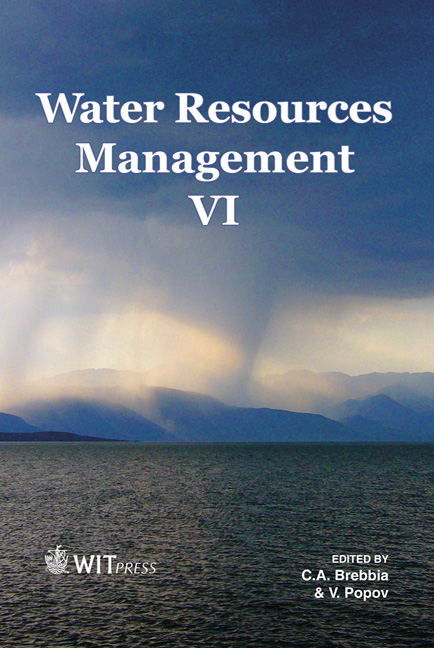Lakes Potency To Reduce Overflow Discharge In The Sunter River Area, Jakarta
Price
Free (open access)
Transaction
Volume
145
Pages
5
Page Range
641 - 645
Published
2011
Size
508 kb
Paper DOI
10.2495/WRM110571
Copyright
WIT Press
Author(s)
T. Kadri
Abstract
There are nine major rivers flowing through Jakarta, the capital city of Indonesia. The total extent of the nine watersheds in Jakarta and its vicinity is about 106,000 ha. The average annual rainfall of three stations (1972-2008) throughout the watersheds is 2973 mm. The growing population and business activities have caused a tremendous conversion of land use. This problem is likely to cause an increase of surface run-off which in turn causing floods in rainy seasons. One of the rivers which floods frequently is Sunter River. It vicinity is about 73 184 092 m2 and water flow 83.8 m3/s at rainfall 100 mm. The land use in this area is very populated, so the rainfall with high intensity always causes floods. Many efforts have been made to solve the flooding but have not yet given optimum results. One effort to solve flooding is the rehabilitation of existing small lakes and building new lakes to accommodate the surface run-off. There are 5 lakes that already exist in that area (37.2 ha) and 11 alternative new small lakes to be built with 163.74 ha area. To evaluate potency of the lakes to reduce flood risk in the Sunter river area, a hydrology simulation is done. This research showed comparative study and how effective the small lakes are in reducing flood risk. Keywords: flood control, lake potency and model. 1 Introduction Over the years lately, Jakarta has been overwhelmed by flood that causes billions of rupiah infinancial as well as material losses to the people who live along the river bank of that region. One of rivers which floods frequently is Sunter River. It vicinity is about 73, 184 092 m2 and water flow 83.8 m3/s at rainfall 100 mm. The land use in this area is very populated, so the rainfall with high intensity
Keywords
flood control, lake potency and model





